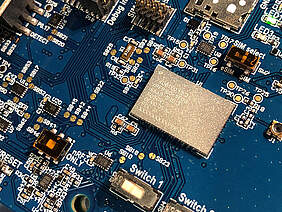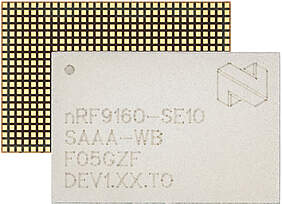NB1 and M1, also known as NB-IoT (Narrow Band IoT) and LTE-M1, are simpler versions of normal LTE (Long Term Evolution, 3.9G). This means they use a much lower frequency spectrum and, therefore, consume very little current. Boasting a range of several kilometers and excellent in-building penetration, these standards enable completely new application fields for the IoT. This technology is particularly suitable for energy-efficient applications in which small amounts of data need to be transmitted in individual cases. Since with LTE-M, the downlink and uplink peak value is ~300kbps at a maximum transmission rate of 20/23dBm; with NB (Narrow Band) IoT, it is just ~30/60kbps at the same transmission rate.
LTE networks as the basis
Since both technologies are based on LTE standards, already existing LTE networks can be used. This is a decisive advantage for the subcategories, as they not only benefit from robust and secure data transmission, but network expansion with worldwide roaming can be carried out quickly and in some cases even through software updates. The MNOs (Mobile Network Operators) organize the frequencies, dimension the dial-in nodes, and expand them according to regional requirements. Network coverage in the USA, Europe, and Asia is already very good, and in most regions even better than with long-range suppliers. This is also due to the fact that the range with NB-IoT is up to seven times greater and with LTE-M up to four times greater than the standard LTE range.
Data transmission even from places that are difficult to access
NB1 and M1 make 2G fallback superfluous. Thanks to the greater ranges, it is not absolutely necessary. In addition, the power supply can be dimensioned more easily because, unlike GPRS, no 2A current peaks have to be absorbed. Low module costs, the external wiring, the Internet provider, and the hassle-free ‘everywhere’ infrastructure clearly outperform alternative long-range technologies in most applications.
NB-IoT and LTE-M are especially suitable for IoT, i.e. everywhere where small amounts of data occasionally need to be transmitted, also from places that are difficult to cover, such as basements, ducts or wide-open fields. There are a whole host of possible applications, especially for sensors that regularly send small amounts of data to a control station. In the smart metering sector, for example, electricity, water, and other meter data can be transmitted directly to utility companies. Other focus areas are infrastructure, transportation and logistics, agriculture and forestry, wearables, and product-as-a-service with predictive maintenance and repair of machinery.
The most energy-efficient NB-IoT is better suited for applications with a fixed location, where normally no wireless cells are changed during transmission, while LTE M1 is the better choice for mobile applications due to its faster transfer rate.
nRF91: Secure and NB-IoT ready
As a pioneer in the field of ultra-low-power wireless technologies, Nordic Semiconductor is also committed to these new wireless transmission types. Thanks to the nRF91 series, the manufacturer offers a multi-mode module for NB1 and M1. The SiP (System in Package) comes with an ARM Cortex M33 microcontroller for customer-specific programming of the application, sensors, and actuators. ARM TrustZone® and ARM CryptoCell ensure secure storage access, while TLS and SSL guarantee end-to-end data encryption of the data transmission. The rewritable flash memory technology, together with the possibility of over-the-air updates, allows subsequent improvements to the firmware, the stacks, and the application. The module automatically searches for available LTE-M and NB-IoT networks and toggles between them.
Built with integrated assisted GPS or without GPS unit in a package measuring just 10x16x1.2mm, the nRF91 SiP requires about four times less space on the PCB and approximately five times less volume than other LTE-M and NB-IoT modules and separate GNSS modules. Seeing as the M33 core enables real edge computing to a certain extent, local information can already be generated from the measured data in the field which can then be efficiently transmitted via the mobile radio unit. This optimizes the overall energy balance and keeps online data consumption to a minimum. The corresponding nRF91-SDK (software development kit) contains all the common stacks, such as MQTT, CoAP, http, LWM2M, IPv4, IPv6, DTLS, TLS, and TCP.
Sensors, LEDs, buttons, and switching relays can be connected via 32 GPIOs. The quartz, SAW filter, and all passive components are integrated – in the SiP, so that only a 50Ω single-ended line is needed as the antenna to complete the edge module.
Sending without SIM
New developments in the field of connectivity continue to drive NB-IoT and LTE-M forward. If you wanted to send or receive data via a cellular network in the past, a SIM card holder and a physical SIM card were necessary in addition to suitable hardware. This means greater space requirements on the PCB and a longer BoM (bill of materials) – and thus higher costs. Added to this is the task of manually swapping SIM cards in the event of changing provider. This is where ‘embedded SIM’ solutions, such as iUICC (integrated Universal Integrated Circuit Card), can help. They offer the advantage that the SIM functions are already integrated on the hardware module – which means less space requirements, a shorter BoM, and lower costs, since embedded SIM solutions can be controlled and updated remotely.
Customers can obtain precise embedded SIM solutions from the Rutronik partner Telit, a leading provider of cellular hardware, connectivity, and cloud solutions, which markets its 2G wireless modules under the name simWISE. The LTE-M and NB-IoT modules are also to be equipped with simWISE by the end of 2018, for example the ME910C1 LTE-M and NB-IoT combi module.
The simWISE modules are complemented by the Telit IoT cloud platform. This results in a customizable cloud solution with device, connectivity, data, and system management functions.

